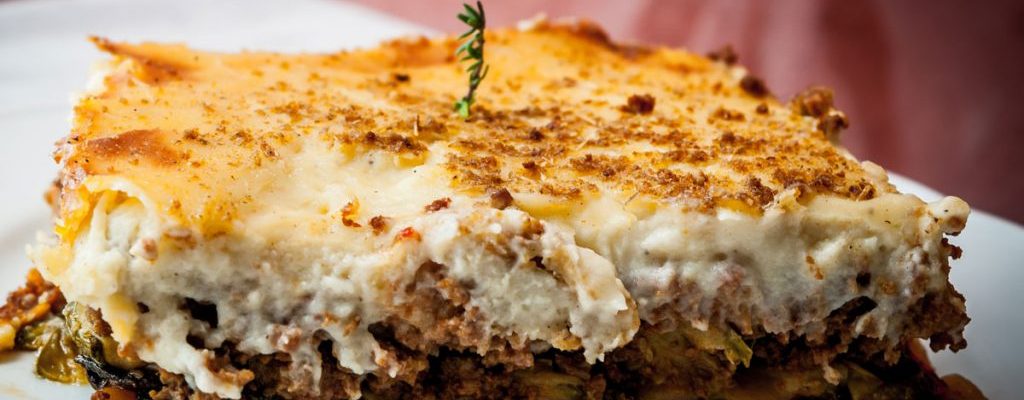Experiencing a perfect forkful of moussaka is a Greek gastronomy experience. Here’s more about the history of moussaka and why it is one of Greece’s most loved dishes.
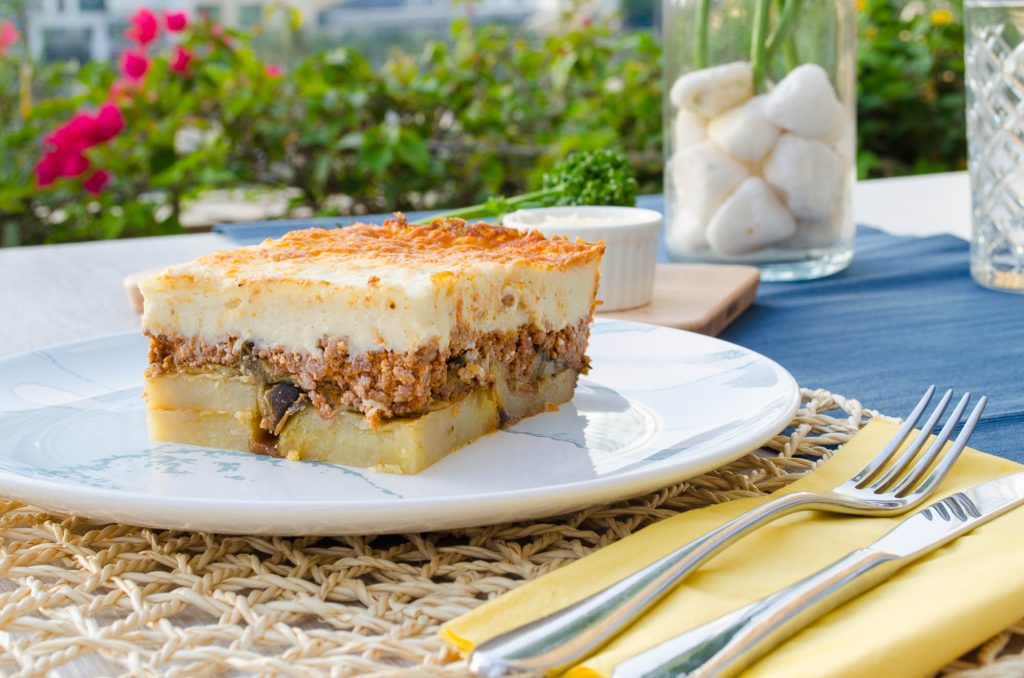
Perfect Moussaka
A medley of fantastic flavors meld when moussaka (the stress is on the last syllable) is baked to perfection. No other dish in the world combines the spiced essence of minced meat, soft tasteful eggplant and the creamy richness of béchamel sauce.
Head to any Greek restaurant to discover this special dish. It is considered one of the top comfort foods for Greeks. Today moussaka is the best known of all Greek dishes along with the gyro and souvlaki.
History of Moussaka
Greek gourmands craft their own special recipe, as does just about every Greek family. There are so many variations of it across the world. There’s no doubt it is known as a Greek food but it is also considered a favorite dish in other Balkan nations, the Middle East and in Turkey. So, where exactly did this fantastic casserole dish originate?
It is widely believed that the Arabs introduced moussaka to the world when they introduced the eggplant. Greek moussaka Arab origins may be related to the Levantine musakhkhan. It seems even the word moussaka probably derived from this Arab word. One food historian claims a 13th-century Arabic cookbook known as the Baghdad Cookery Book details a recipe which could very well be the ancestor of moussaka. Today, moussaka is a common dish in Lebanon and the Arab world, a version that consists of eggplants, olive oil, garlic, onions and tomatoes.
In 1910, Nikolas Tselementes, one of the most influential Greek chefs, published Greek recipes including a moussaka featuring French béchamel sauce on top. His version is the moussaka Greeks know and love.
Moussaka Today
Today, there are many of versions of moussaka which always consists of eggplant and ground meat. Sometimes the meat is lamb, sometimes it is beef and in other recipes it is a mix of both. Other additions include vegetables such as zucchini or potatoes.
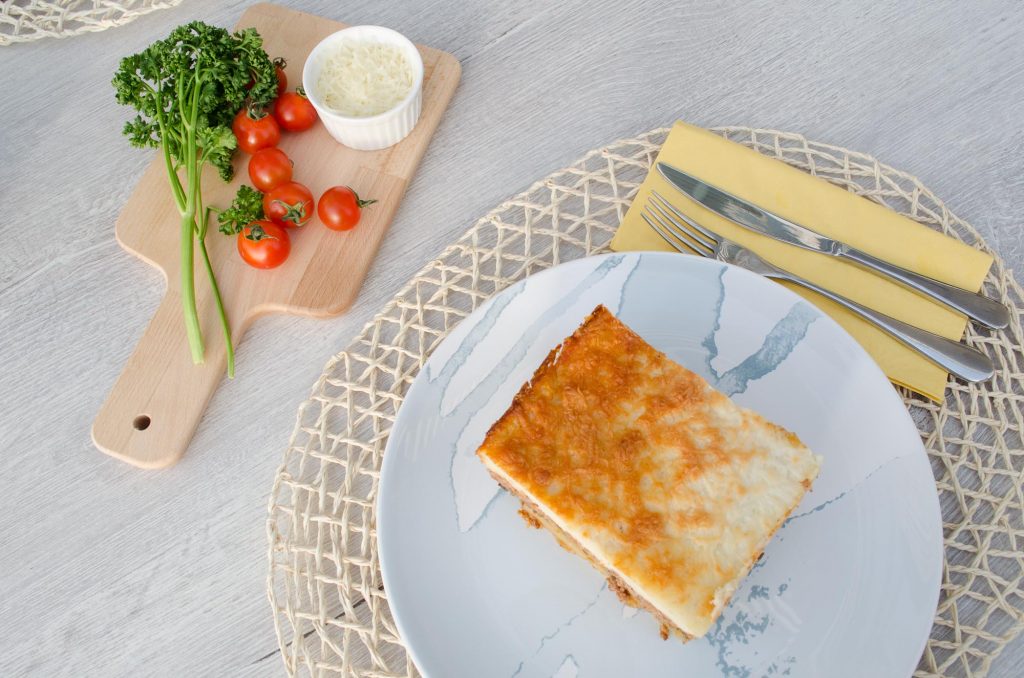 Intrigued? If you can’t wait until your next outing to a local Greek restaurant or your big trip to Greece, why not try baking your own moussaka?
Intrigued? If you can’t wait until your next outing to a local Greek restaurant or your big trip to Greece, why not try baking your own moussaka?
Here’s one of our favorite recpies by the Brown Eyed Baker blog which is based on a recipe by Vefa Alexiadou, a notable Greek chef known for her fantastic Greek cookbooks that explore traditional Greek recipes.
Moussaka Recipe by the Brown Eyed Baker
2¼ pounds eggplant, peeled and cut into ½-inch rounds
½ cup olive oil
1 yellow onion, grated
2 garlic cloves, sliced
2 pounds lean ground beef
16 ounces tomato puree
¼ teaspoon ground allspice
½ teaspoon granulated sugar
Salt and pepper
1 egg white, lightly beaten
5 tablespoons finely chopped fresh parsley
5 tablespoons plain breadcrumbs
1 cup grated Parmesan cheese
2¼ pounds russet potatoes, peeled and cut into ½-inch rounds
For the White Sauce:
3 cups whole milk
3 tablespoons unsalted butter
3 tablespoons all-purpose flour
¼ teaspoon ground nutmeg
Salt and white pepper, to taste
5 tablespoons heavy cream
3 egg yolks, lightly beaten
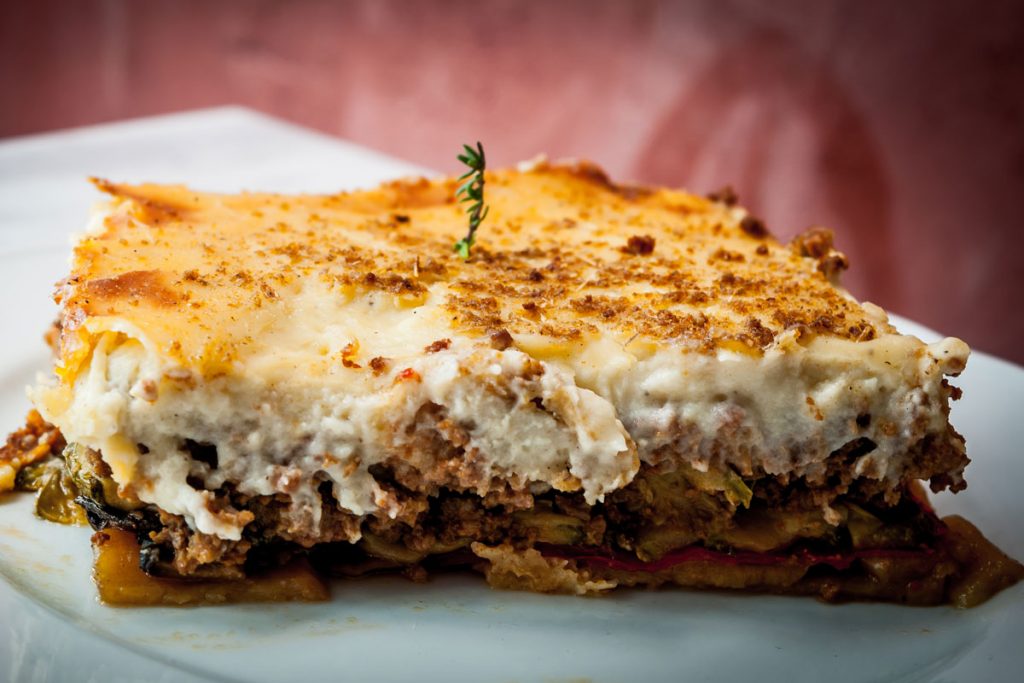
DIRECTIONS:
1. Sprinkle the eggplant slices with salt and let drain in a colander for 1 hour. Rinse, squeeze out any excess water and pat dry.
2. Heat ¼ cup of the olive oil in a large saute pan over medium heat. Add the eggplant and cook, turning occasionally, for 6 to 8 minutes, or until lightly browned on both sides (if you don’t have a pan big enough, do this in two batches). Remove from the pan with a slotted spoon or spatula and drain on paper towels.
3. Reduce the heat to low and add the remaining ¼ cup of olive oil to the pan. Add the onion and garlic and cook, stirring occasionally, for about 5 minutes, or until the onion is softened. Increase the heat to medium, add the ground beef and cook, stirring and breaking up the meat with a spoon, for about 10 minutes, or until browned. Add the tomato puree, allspice, and sugar, and season with salt and pepper. Reduce the heat and simmer for 15 to 20 minutes, or until all the liquid has evaporated. Remove from heat and let cool, then fold in the egg white and parsley.
4. Meanwhile, prepare the white sauce. Place the milk in a small saucepan and bring to barely a boil, then remove from the heat. Melt the butter in a large, heavy skillet over medium heat, then stir in the flour and cook, stirring frequently, for 1 minute. Remove the pan from the heat and gradually pour in the hot milk, whisking constantly until the mixture is smooth. Return the sauce to medium heat and simmer, whisking constantly, for 10 to 15 minutes, until thickened and smooth. Remove from the heat, and whisk in the nutmeg, salt and pepper.
5. Preheat oven to 400 degrees F. Grease a 10×15-inch lasagna pan with butter and sprinkle with 2 tablespoons of the bread crumbs. Cover the base of the dish with the potato slices, overlapping them slightly. Spread half of the meat mixture on top and sprinkle with half of the Parmesan cheese and 2 tablespoons of the remaining bread crumbs. Cover with the eggplant slices, overlapping them slightly. Spread the remaining meat mixture on top, sprinkle with the remaining Parmesan cheese and the remaining breadcrumbs. (At this point, the dish may be covered and frozen. Thaw before baking.)
6. Whisk the cream and egg yolks into the white sauce and spread it evenly over the surface of the dish. Bake for about 50 minutes, or until the top is golden brown. Remove from the oven and let stand for 15 minutes before serving.
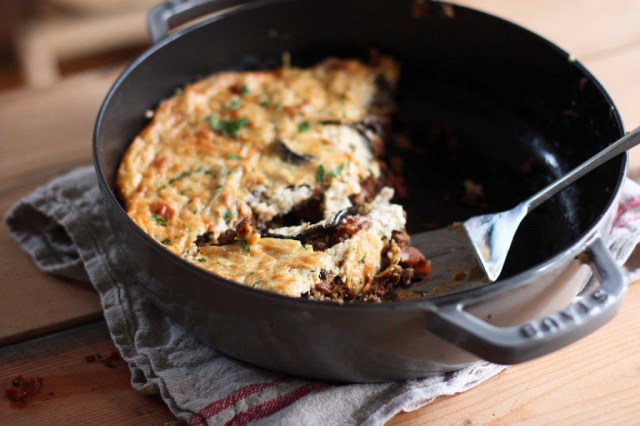
At Fly Me to the Moon, we believe Greek gastronomy is a wonderful part to the Greek travel experience. With a deep knowledge of the top restaurants, authentic traditional taverns and scenic eateries across the country, our team incorporates the best gastronomy experiences during your trip to our beautiful country. Do you have a favorite Greek dish?

